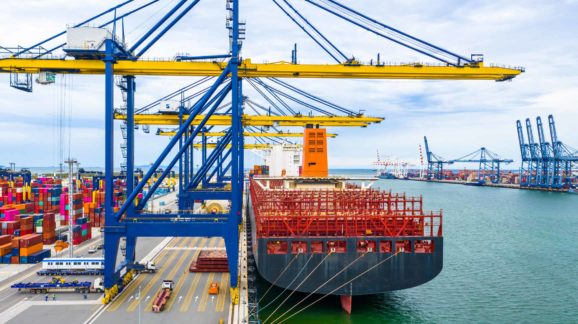The Invisible Hand, Not Washington, Is Easing the Supply Chain Crisis

Photo Credit: Getty
The supply chain crisis is showing signs of receding. This is happening not because of any action by the White House or Congress. The market itself is correcting the problem. There’s still a long way to go to for the crisis to recede entirely. To help it along, the best thing Washington can do is to get out of the way and let the invisible hand of the market continue its work.
The backlog of ships anchored offshore and waiting to unload their cargos at the Ports of Los Angeles and Long Beach has dropped to 71, down a height of 86. The cost to ship a container across the Pacific had its biggest decline in two years in mid-November, though it is still about three times what it cost a year ago. Retailers like Target are reporting being fully stocked up for the holidays.
Partly this is a consequence of the COVID-19 outbreak receding. The pandemic was the spark that caused the crisis, creating health and safety concerns that slowed operations at the ports and created backlogs that sent shocks all down the rest of the supply chain.
Another major factor is that people throughout the supply chain began reacting to the signals the market was sending. Employers utilized a tried and true method for dealing with situations when the current demand for goods can’t be met: hire more people to deliver those goods. The Labor Department reported this month that the transportation and warehousing sector added 54,000 jobs in October. Overall, that sector now employs 149,000 more people than it did in February 2020, when the pandemic first forced the economy into lockdown.
Major retailers like Walmart, Target, Costco and Home Depot were already highly skilled at logistics. They put that knowledge to use by chartering their own ships to bring supplies from overseas. Unlike the massive freighters stuck off the shore of southern California, the retailers chose smaller vessels that could be routed to similarly smaller, less-congested ports.
Retailers have also found alternate suppliers and products and opened new warehouses to build up larger inventories. Meanwhile, the ports have begun moving to 24/7 operations, which they weren’t doing previously, albeit slowly and fitfully.
What hasn’t helped the situation much is the White House or Congress. President Biden made a show of saying in October that he was directing the ports to open 24/7. What he didn’t say that no rule or regulation had prevented the ports from operating around the clock previously. The issue was that the West Coast ports’ contracts with the International Longshore and Warehouse Union (ILWU) had made 24/7 operations prohibitively expensive. Nor had the White House gotten the union to make any apparent concessions. Biden was just taking credit for the ports’ decision to accept the costs. Even then, the move has not been easy.
Not only that, but the ILWU has rejected the port’s latest contract offer, creating the specter of new disruptions when the contract runs out next year. It’s probable that the union is just using the current crisis to play hardball in its negotiations, but it’s still an embarrassment for the White House, which had claimed it had brokered a deal after “weeks of negotiation” with major union and retailers and freight movers to ensure 24/7 operations from now on. The union, instead of feeling pressure due to its role in the creating the supply chain crisis and making concessions to help alleviate it, appears emboldened.
The White House and Congress have also dedicated $17 billion of the Infrastructure Investment and Jobs Act, signed into law earlier this month, to improve port operations. As is typical in Washington, the money likely won’t be dispensed until after the worst of the crisis has passed.
Capitol Hill would have been better off remembering one of Ronald Reagan’s favorite sayings, “Don’t just do something! Stand there!”